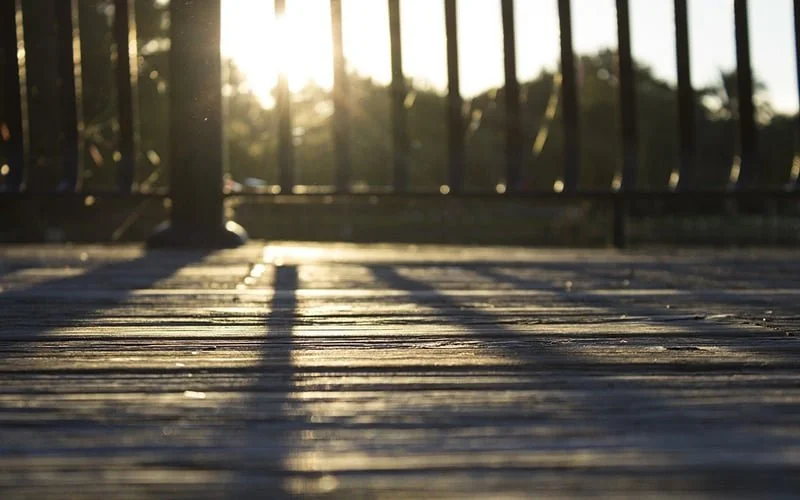The Truth About Patina and What Makes Mahogany Unique
It is no secret that wood furniture, decks, and fences change color as they age – sometimes very quickly. Teak, in particular, can start changing color in a matter of minutes in direct sunlight, and freshly cut cherry wood is often mistaken for maple without its distinct red tones. While it may be impossible to control how the wood changes, it is possible to guide the development of the desired colors by controlling exposure to outside elements like water and oxygen.
Developing Patina
Every species of wood is unique and reacts differently to environmental conditions. In some cases, sealing the wood while it is fresh prevents it from losing its color. In other cases, speeding up the aging process creates the desired result faster.
While trees are growing, the wood inside is alive. Composed of many different elements, the wood takes on an array of colors from yellow and brown to red. When the wood is harvested and turned into lumber, it is suddenly exposed to direct sunlight, water, and high oxygen levels in the atmosphere. These elements directly impact the very components that give the wood its natural color, changing the color of the outer layer of cells in the wood and altering its appearance.
Oxygen in the air dries out the natural oils and moisture in freshly cut wood, leaving wood vulnerable to further degradation. Tropical hardwoods that contain higher levels of oil are naturally more resistant to color changes. Furniture oils protect wood by adding back some of the oil that has been lost and preserving the surface longer.
Ultraviolet rays from the sun have a particularly significant impact. This radiation breaks down the pigment in the wood, causing a loss of color. In effect, it bleaches the wood. This reaction explains why many wood species will turn a silvery grey color if left untreated. Ipe, teak and cedar wood all react in this way. Fortunately, this color change is not always an indication that the wood is rotten or structurally unsound, especially for hardwoods. The wood’s surface may break down, but the structure beneath the surface is still intact. Often the solution to this greying problem is to clean and strip the outer layer of wood cells and apply a high-quality sealer to protect the wood from further damage.
Aging Wood
Even if they are well protected, most hardwood species change color over time. As a general rule, light-colored woods darken, and dark woods get lighter in color. For example, maple develops a honey color, and walnut takes on blonde tones. Much of the color change takes place during the first year. It is wise to move furniture and rugs frequently during this first year to avoid creating dark and light spots on your new wood surface.
Some wood species are surprisingly ordinary when freshly harvested. Only after some aging do they become the richly colored woods that consumers desire. Their highly sought-after color and appearance come with time. Cherry wood, often used for furniture, falls into this category. The elegant red color from which it gets its name takes 6-12 months to develop. New cherry wood is a non-descript straw color.
Fijian Mahogany
Among decking wood choices, Fijian Mahogany or Swietenia Macrophylla is unique in its ability to age gracefully and increase in beauty over the years. Like other common decking wood species, mahogany will turn grey if not sealed. However, if properly cared for, mahogany’s natural pinkish to pale brown color will deepen with age, becoming more striking with each passing year. This beautiful color, along with a straight grain, wide-spread availability, workability, and lack of knots, makes this particular species of wood a sought-after choice for decks. It can last 20 years or more.
For many years, mahogany was over-harvested in Brazil. Fortunately, sustainable practices for growing mahogany on the Fiji Islands are flourishing. In ten years, Fiji alone will be able to meet 3/4 of the worldwide demand for mahogany.
After World War II, Fijians planted mahogany trees across their islands for the purpose of creating a sustainable resource. The trees became a crop of sorts. Today, the growing and harvesting of the trees is still highly regulated to minimize the impact on surrounding trees in the forests. These practices make Fijian Mahogany one of the greenest building products available. Additionally, island residents handle all log processing on the islands before exporting the lumber to maximize the economic benefit to Fiji.
Natural products like hardwoods are never the same from one board to another. A multitude of factors, including the soil composition in which the tree grows, can ultimately impact the way that the harvested wood looks. This variable appearance is one of the reasons that wood is such a magnificent building product. The variations in color that develop over time give the wood life and beauty are unparalleled in manufactured products.
Want to learn more about the best wood choices for your building projects? Visit our Colorado Springs or Denver lumber yards.

 CALL FOR A QUOTE
CALL FOR A QUOTE


